
Exploring the Pristine Beauty of Similan Islands
Discover the Similan Islands in Thailand: A pristine paradise of white sandy beaches, crystal-clear waters, vibrant coral reefs, and rich marine life perfect for diving and relaxation.
The Similan Islands, located off the coast of Thailand in the Andaman Sea, are a group of eleven idyllic isles that form one of the country's most stunning national parks. Known for their crystal-clear waters, vibrant coral reefs, and rich marine life, these islands are a paradise for divers and snorkelers from around the world. The islands are also home to some of the whitest and softest sandy beaches you'll ever step foot on, making them perfect for relaxation and sunbathing. Each island offers its own unique charm and attractions. Island number 8, also known as Koh Similan, is the largest and features the famous Sailing Rock, offering panoramic views of the surrounding seascape. Island number 4, or Koh Miang, is known for its lush forests and diverse wildlife, including flying foxes and Nicobar pigeons. The underwater world around the Similan Islands is equally impressive, with dive sites like Richelieu Rock providing opportunities to see manta rays, whale sharks, and an array of colorful fish. The Similan Islands are best visited during the dry season, from November to April, when the weather is ideal for outdoor activities. During this time, the visibility underwater is excellent, allowing you to fully appreciate the vibrant marine life and coral formations. Whether you're an avid diver, a nature lover, or simply looking for a tranquil escape, the Similan Islands offer an unforgettable experience that will leave you yearning to return.
Local tips in Similan Islands
- Visit during the dry season (November to April) for the best weather and underwater visibility.
- Book your diving or snorkeling tours in advance, as they can fill up quickly.
- Pack reef-safe sunscreen to protect the delicate coral reefs.
- Bring cash, as there are no ATMs on the islands.
- Stay hydrated and bring snacks, as facilities on the islands are limited.
Exploring the Pristine Beauty of Similan Islands
The Similan Islands, located off the coast of Thailand in the Andaman Sea, are a group of eleven idyllic isles that form one of the country's most stunning national parks. Known for their crystal-clear waters, vibrant coral reefs, and rich marine life, these islands are a paradise for divers and snorkelers from around the world. The islands are also home to some of the whitest and softest sandy beaches you'll ever step foot on, making them perfect for relaxation and sunbathing. Each island offers its own unique charm and attractions. Island number 8, also known as Koh Similan, is the largest and features the famous Sailing Rock, offering panoramic views of the surrounding seascape. Island number 4, or Koh Miang, is known for its lush forests and diverse wildlife, including flying foxes and Nicobar pigeons. The underwater world around the Similan Islands is equally impressive, with dive sites like Richelieu Rock providing opportunities to see manta rays, whale sharks, and an array of colorful fish. The Similan Islands are best visited during the dry season, from November to April, when the weather is ideal for outdoor activities. During this time, the visibility underwater is excellent, allowing you to fully appreciate the vibrant marine life and coral formations. Whether you're an avid diver, a nature lover, or simply looking for a tranquil escape, the Similan Islands offer an unforgettable experience that will leave you yearning to return.
When is the best time to go to Similan Islands?
Iconic landmarks you can’t miss
Mu Ko Similan National Park
Discover the breathtaking beauty of Mu Ko Similan National Park, Thailand's premier destination for snorkeling, diving, and serene beach escapes.

Ao Kuerk Bucht
Experience the pristine beauty and vibrant marine life at Ao Kuerk Bucht in the breathtaking Similan Islands, Thailand.

Sailboat rock
Discover the breathtaking beauty of Sailboat Rock in Phang Nga, Thailand, where stunning natural landscapes meet vibrant marine life.

Симиланские острова. Остров 8
Explore the pristine beaches and vibrant marine life of the Similan Islands, Thailand's stunning national reserve perfect for adventure seekers and nature lovers.

Unmissable attractions to see
Khao Lak-Lam Ru National Park
Explore the natural beauty and adventure of Khao Lak-Lam Ru National Park, a breathtaking haven for nature lovers and thrill-seekers in Thailand.

International Tsunami Museum
Discover the International Tsunami Museum in Phang-nga, a poignant tribute to resilience and awareness of natural disasters through engaging exhibits.

Lampi Waterfall
Discover the enchanting Lampi Waterfall in Thai Mueang, Phang-nga, where nature's beauty meets adventure in a tranquil setting.

Phang Nga Elephant Park
Experience the beauty and majesty of elephants at Phang Nga Elephant Park, a sanctuary dedicated to ethical interaction and wildlife conservation.

Ton Pling Waterfall
Explore the breathtaking beauty of Ton Pling Waterfall in Phang-nga, a serene escape into nature's tranquility amidst stunning landscapes.

Natai Beach
Experience the pristine beauty and tranquility of Natai Beach in Phang-nga, a perfect escape for relaxation and adventure seekers alike.

Pakarang Cape
Explore the breathtaking beauty and rich biodiversity of Pakarang Cape, a must-visit tourist attraction in Phang-nga, Thailand.

Small Sandy Beach
Experience the serenity of Small Sandy Beach in Phang-nga, where soft sands meet turquoise waters for a perfect tropical getaway.
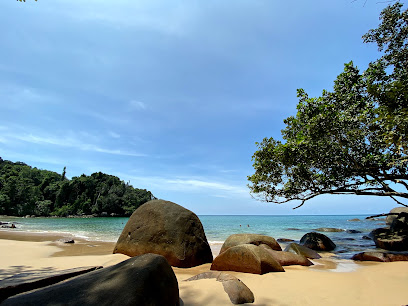
Khao Lampi–Hat Thai Mueang National Park
Explore Khao Lampi–Hat Thai Mueang National Park: A Stunning Blend of Beaches, Rainforests, and Wildlife Await You in Thailand's Natural Paradise.

Bun Sung Iron Bridge
Experience the breathtaking beauty and rich culture of Bun Sung Iron Bridge in Phang-nga, a must-visit destination for every traveler.

Sea Turtle Conservation Center
Discover the wonders of marine life at the Sea Turtle Conservation Center, a premier destination for wildlife enthusiasts and eco-conscious travelers in Phang-nga.

Khlong Sang-Ne
Explore the tranquil beauty of Khlong Sang-Ne, a breathtaking waterway in Phang-nga, Thailand, perfect for kayaking and nature photography.

Ton Chong Fa Waterfall
Experience the breathtaking beauty of Ton Chong Fa Waterfall - a serene escape into nature's paradise in Phang-nga, Thailand.
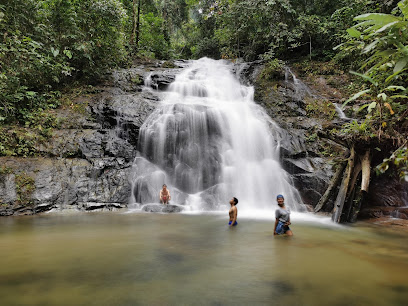
Police Boat T813 Tsunami Memorial Phangnga
Explore the Police Boat T813 Tsunami Memorial, a poignant tribute to resilience and recovery from the 2004 tsunami in Phangnga, Thailand.

Water Park, 360-degree viewpoint
Experience thrilling water attractions and breathtaking views at Andaman View Point, a must-visit destination in Phang-nga, Thailand.

Essential places to dine
Mali Restaurant - Thaifood Seafood BBQ Hotpan
Discover authentic Thai flavors at Mali Restaurant in Khao Lak - where fresh seafood meets traditional cooking.

Gold Elephant
Experience the best of authentic Thai cuisine at Gold Elephant in Khuk Khak – a culinary haven for seafood lovers.
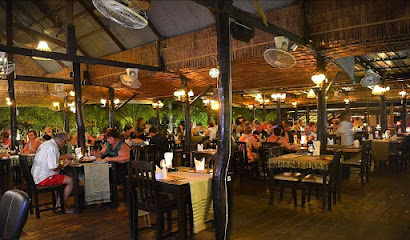
Similan Islands
Experience the untouched beauty of Similan Islands: a tropical paradise with crystal-clear waters and vibrant marine life.

Mojo Thai Restaurant
Experience authentic Thai cuisine at Mojo Thai Restaurant in Khao Lak—where every dish tells a story of flavor and tradition.
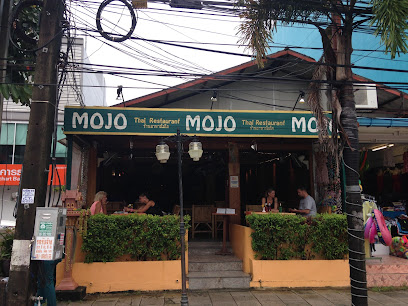
KruaThai
Experience authentic Thai cuisine at KruaThai in Phang-nga - where every dish tells a story of flavor and tradition.

Siam Restaurant
Discover exquisite Thai cuisine at Siam Restaurant – where every meal tells a story of flavor and tradition in beautiful Khuekkhak.

Pam's Restaurant & Cooking class
Experience authentic Thai flavors at Pam's Restaurant & Cooking Class in Phang-nga – where culinary dreams come true.

ThaiLife Restaurant & Mookata
Experience authentic Thai flavors and interactive dining at ThaiLife Restaurant & Mookata in Khao Lak.
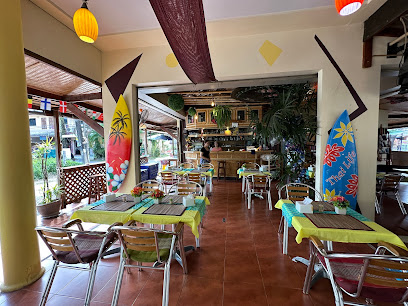
Green Pepper Khao Lak Restaurant
Experience authentic Thai cuisine alongside international favorites at Green Pepper Khao Lak Restaurant in Thailand's stunning coastal paradise.
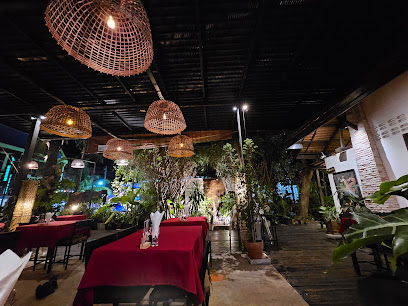
Jasmine Thai Restaurant
Discover the authentic flavors of Thailand at Jasmine Thai Restaurant – where culinary excellence meets warm hospitality in Phang-nga.

Ruanthai Kitchen
Discover Ruanthai Kitchen in Phang-nga: where authentic Thai cuisine meets warm hospitality in a vibrant setting.

World Famous Rusty Pelican Restaurant
Experience mouthwatering American and Mexican cuisine at the Rusty Pelican Restaurant in Khuekkhak – a family-friendly gem in Thailand.

Takiang Restaurant
Discover authentic northern Thai flavors at Takiang Restaurant in Phang-nga – where every meal is a celebration of culinary tradition.

อีสานริมหาด Isarn Beachside Restaurant
Experience authentic Thai cuisine with breathtaking ocean views at Isarn Beachside Restaurant in Phang-nga.
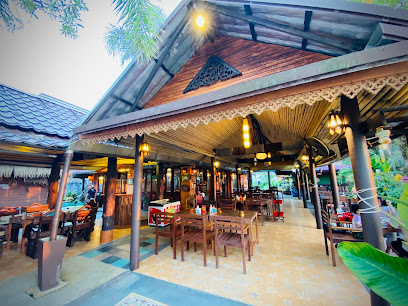
Pinky Restaurant
Experience authentic Thai flavors at Pinky Restaurant on Bang Sak Beach – where fresh seafood meets stunning ocean views.

Markets, malls and hidden boutiques
Mu Ko Similan National Park
Discover the untouched beauty of Mu Ko Similan National Park, Thailand's premier destination for marine adventures and breathtaking landscapes.
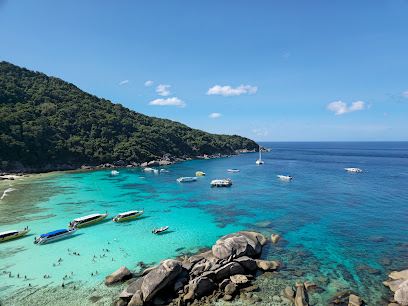
Nang Thong Supermarket
Discover a treasure trove of local and international products at Nang Thong Supermarket, your ultimate shopping destination in Khuekkhak!

Khaolak Mark One Tailor
Discover bespoke tailoring excellence at Khaolak Mark One Tailor, where custom clothing meets impeccable craftsmanship in Khao Lak.

ENDLESS SUMMER
Experience the best of Phuket at Endless Summer, where fashion meets flavor in a tropical paradise.
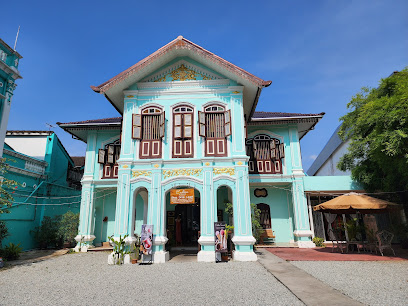
Ao Kuerk Bucht
Experience the stunning beauty of Ao Kuerk Bucht, a tranquil paradise in Phang-nga, Thailand, perfect for relaxation and underwater adventures.

Turtle Village
Explore Turtle Village in Phuket: your go-to shopping mall for unique souvenirs, delicious dining, and an unforgettable local experience.

Garang Cafe
Indulge in creamy delights at Garang Cafe in Takua Pa, Phang-nga - an ice cream lover's paradise with unique flavors and a cozy atmosphere.

Khao Lak Explorer Diving Center: Similan Islands Liveaboard & Day Trips Richelieu Rock
Explore the breathtaking underwater world with Khao Lak Explorer Diving Center's liveaboard and day trips to Thailand's stunning dive sites.
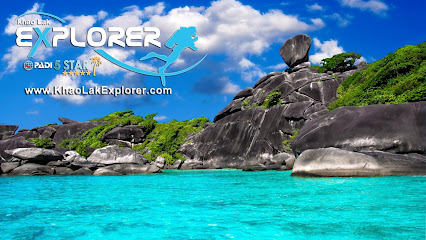
Mr Tailor Khao Lak
Experience bespoke tailoring and exquisite batik clothing in the heart of Khao Lak, where fashion meets local craftsmanship.

Merino Khaolak Tailor House
Experience bespoke tailoring and unique fashion accessories at Merino Khaolak Tailor House, where craftsmanship meets personalized service in Khuk Khak.

KING POWER Phuket International Airport
Explore an exceptional duty-free shopping experience at KING POWER Phuket International Airport, where luxury meets convenience for travelers.

Paradise Beach Cafe @ Khao Lak
Discover the tranquil charm of Paradise Beach Cafe - your perfect coffee retreat overlooking Khao Lak's breathtaking shores.

Pirate Divers
Discover the breathtaking underwater world with Pirate Divers in Khao Lak, Thailand, where adventure meets professionalism in every dive.

Similan Diving Safaris PADI 5 Star Dive Center
Discover the underwater wonders of Thailand at Similan Diving Safaris, a premier PADI 5 Star Dive Center in Khao Lak, offering unforgettable diving experiences.

Zigma Espresso Khok Kloi
Discover Zigma Espresso in Khok Kloi, where exquisite coffee meets a cozy atmosphere, perfect for relaxation and socializing.

Essential bars & hidden hideouts
Memories Beach Bar
Experience the vibrant atmosphere and breathtaking sunsets at Memories Beach Bar in Khao Lak, your perfect tropical getaway.

Monkey Bar khao lak
Discover the vibrant atmosphere of Monkey Bar Khao Lak, where refreshing cocktails meet tropical vibes in a stunning setting.

Fat Shark Bar
Discover the vibrant energy and unique decor of Fat Shark Bar, an affordable gem in Khuekkhak's nightlife scene.

Mr. Chay Bar
Discover the vibrant atmosphere of Mr. Chay Bar in Phang-nga, where creative cocktails and friendly service create memorable nights.

Piranha Bar
Piranha Bar: A lively bar in Khuekkhak, Phang-nga, offering refreshing drinks, friendly service, and a vibrant atmosphere for tourists seeking nightlife.

Gecko Bar , Khaolak
Experience the vibrant nightlife at Gecko Bar in Khaolak, a delightful spot for drinks, live music, and a fun atmosphere.

DREAM BAR
Experience the vibrant nightlife at DREAM BAR in Khuekkhak, a lively bar offering refreshing drinks and a friendly atmosphere for all visitors.

Moose's Pub
Discover a vibrant nightlife at Moose's Pub in Khukkak, Phang-nga, where great drinks and live entertainment await every visitor.

WonderlanD Bar & Restaurant
Experience the best of tropical dining and nightlife at WonderlanD Bar & Restaurant in Khuekkhak, Phang-nga.

Landing Bar
Discover the vibrant cocktail scene at Landing Bar in Phang-nga, where local flavors meet a lively atmosphere for an unforgettable night out.
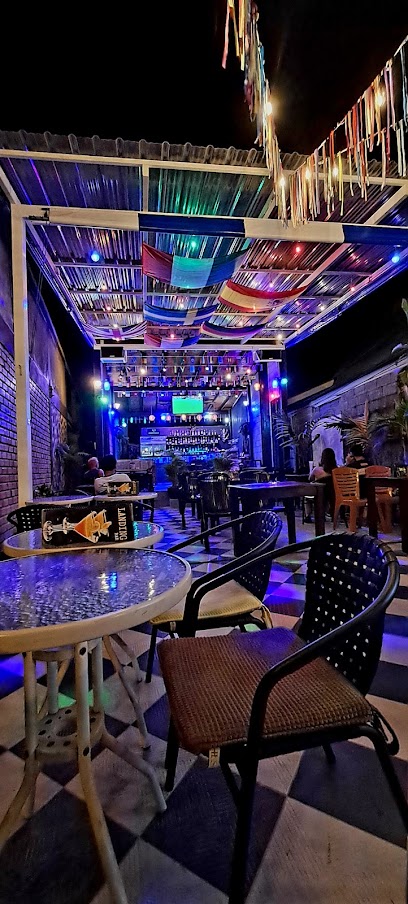
Tiki Bar Bang Niang
Experience the vibrant flavors of Tiki Bar Bang Niang, a tropical grill and bar offering delicious BBQ, refreshing cocktails, and live music in a lively atmosphere.

Canal Bar
Discover the vibrant nightlife at Canal Bar in Khuekkhak, where refreshing drinks and a friendly atmosphere await every traveler.

Spunky Monkey Khao Lak
Discover the vibrant nightlife at Spunky Monkey Khao Lak, a lively bar offering creative cocktails and a welcoming atmosphere for all tourists.

Biker Bar
Experience the lively atmosphere and delicious cuisine at Biker Bar, a must-visit spot in Khao Lak for tourists and locals alike.
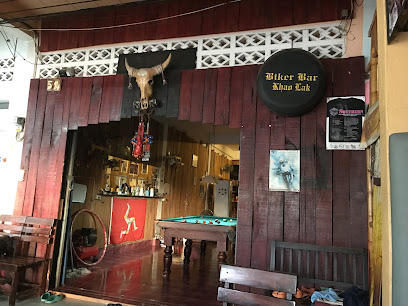
Chang Bar
Experience the vibrant atmosphere and refreshing drinks at Chang Bar, your perfect tropical escape in Phang-nga.

Local Phrases about Similan Islands
-
- Helloสวัสดี
[sawasdee] - Goodbyeลาก่อน
[la kon] - Yesใช่
[chai] - Noไม่
[mai] - Please/You're welcomeโปรด/ยินดีต้อนรับ
[prohdt/yindii dtawn rap] - Thank youขอบคุณ
[khop khun] - Excuse me/Sorryขอโทษ
[khor toht] - How are you?สุขสันต์ดีไหม
[suk san di mai] - Fine. And you?สบายดี คุณล่ะ
[sabai di khun la] - Do you speak English?คุณพูดภาษาอังกฤษได้ไหม
[khun poot phasa angkrit dai mai] - I don't understandฉันไม่เข้าใจ
[chan mai khao jai]
- Helloสวัสดี
-
- I'd like to see the menu, pleaseขอดูเมนูหน่อย
[khor duu menu noi] - I don't eat meatฉันไม่กินเนื้อ
[chan mai gin nuea] - Cheers!ชนแก้ว
[chon kaew] - I would like to pay, pleaseขอจ่ายเงินหน่อย
[khor jai ngeen noi]
- I'd like to see the menu, pleaseขอดูเมนูหน่อย
-
- Help!ช่วยด้วย
[chui duay] - Go away!ไปไกลๆ
[bpai glai glai] - Call the Police!โทรตำรวจ
[tor tamruat] - Call a doctor!โทรหมอ
[tor mor] - I'm lostฉันหลงทาง
[chan long tang] - I'm illฉันไม่สบาย
[chan mai sabai]
- Help!ช่วยด้วย
-
- I'd like to buy...ฉันต้องการซื้อ...
[chan tong gaan seuu...] - I'm just lookingฉันแค่ดู
[chan kae duu] - How much is it?ราคาเท่าไหร่
[ra kha tao rai] - That's too expensiveแพงเกินไป
[paeng gein pai] - Can you lower the price?ลดราคาได้ไหม
[lot ra kha dai mai]
- I'd like to buy...ฉันต้องการซื้อ...
-
- What time is it?ตอนนี้กี่โมง
[dton nee kee mong] - It's one o'clockเป็นโมง
[pen mong] - Half past (10)ครึ่งหลัง(10)
[kheung lang (sip)] - Morningเช้า
[chao] - Afternoonบ่าย
[bai] - Eveningเย็น
[yen] - Yesterdayเมื่อวาน
[meua wan] - Todayวันนี้
[wan nee] - Tomorrowพรุ่งนี้
[proong nee] - 1หนึ่ง
[neung] - 2สอง
[song] - 3สาม
[sam] - 4สี่
[see] - 5ห้า
[ha] - 6หก
[hok] - 7เจ็ด
[jet] - 8แปด
[paet] - 9เก้า
[gao] - 10สิบ
[sip]
- What time is it?ตอนนี้กี่โมง
-
- Where's a/the...?...อยู่ที่ไหน
[... yu tee nai] - What's the address?ที่อยู่คืออะไร
[tee yu keu a rai] - Can you show me (on the map)?คุณใช้สายตาแสดงให้ฉันด้วยได้ไหม
[khun chai sai dta sa daeng hai chan duay dai mai] - When's the next (bus)?รถเมล์ต่อไปเมื่อไหร่
[rot mel tor pai meua rai] - A ticket (to ....)ตั๋ว (ไป.....)
[dtua (bpai...)]
- Where's a/the...?...อยู่ที่ไหน
History of Similan Islands
-
The Similan Islands have long been a part of ancient maritime routes that connected traders from India, Persia, and the Arabian Peninsula with Southeast Asia. Archaeological evidence suggests that these islands were once waypoints for merchant vessels, reflecting their strategic importance in regional trade networks.
-
During the 17th and 18th centuries, the Similan Islands were rumored to be a hideout for pirates. These pirates took advantage of the islands' remote location and natural harbors to launch raids on passing trade ships. The dense forests and hidden coves provided perfect cover for their nefarious activities.
-
In the 19th century, European colonial powers began to exert influence over Southeast Asia. While the Similan Islands were never directly colonized, they were indirectly affected by the broader geopolitical shifts in the region. The islands were occasionally visited by British and French naval expeditions, which mapped the area and documented its natural resources.
-
In 1982, the Similan Islands were designated as a national park by the Thai government. This marked a significant shift in the islands' history, as it aimed to protect the unique marine and terrestrial ecosystems from overexploitation. The designation helped to preserve the islands' pristine beaches, coral reefs, and diverse wildlife, making them a premier destination for eco-tourism.
-
The 2004 Indian Ocean tsunami had a profound impact on the Similan Islands. The massive waves caused significant damage to the islands' infrastructure and natural habitats. However, extensive recovery and conservation efforts were initiated in the aftermath, leading to a remarkable ecological rebound and the restoration of the islands' beauty.
-
In recent decades, the Similan Islands have become a popular destination for international tourists, particularly divers and snorkelers. The islands' crystal-clear waters, vibrant coral reefs, and abundant marine life attract thousands of visitors each year. This tourism boom has brought both opportunities and challenges, necessitating sustainable practices to balance economic benefits with environmental preservation.
Similan Islands Essentials
-
The Similan Islands are located in the Andaman Sea, off the coast of southern Thailand. The nearest major town is Khao Lak, which is approximately 70 kilometers away. The most common way to get to the Similan Islands is by boat from Khao Lak. Several companies offer speedboat and liveaboard trips to the islands. The journey typically takes around 1.5 to 2 hours by speedboat. The nearest airport is Phuket International Airport, approximately 120 kilometers from Khao Lak. From Phuket, you can take a taxi or a bus to Khao Lak, and then arrange for boat transportation to the Similan Islands.
-
The primary mode of transportation around the Similan Islands is by boat. Once on the islands, walking is the main way to get around, as motorized vehicles are not allowed. Boats can be hired for island-hopping and exploring different snorkeling and diving sites. For those staying on liveaboards, transportation is typically provided as part of the package. It's important to book transportation in advance, especially during the peak season from November to April, when the islands are open to visitors.
-
The official currency in Thailand is the Thai Baht (THB). Credit cards are accepted in some hotels and larger establishments, but cash is preferred, especially on the islands. ATMs are not available on the Similan Islands, so it is advisable to withdraw sufficient cash before leaving the mainland. Money exchange services are available in Khao Lak and Phuket. It is also a good idea to carry small denominations for convenience.
-
The Similan Islands are generally safe for tourists. However, it is important to take standard precautions. Follow safety guidelines provided by tour operators, especially when engaging in water activities like snorkeling and diving. Avoid swimming alone and be aware of strong currents. There are no high-crime areas specifically targeting tourists, but it is always wise to keep an eye on your belongings and use hotel safes for valuables. Avoid walking alone at night on deserted beaches.
-
In case of an emergency, contact the local authorities or your tour operator immediately. There are no permanent medical facilities on the Similan Islands, so for serious medical issues, evacuation to the mainland will be necessary. It is highly recommended to have travel insurance that covers medical emergencies and evacuation. Basic first aid kits are available with most tour operators. For minor health issues, over-the-counter medications can be purchased in Khao Lak or Phuket before heading to the islands.
-
Fashion: Do wear appropriate swimwear at the beach but cover up when leaving the beach area. Avoid wearing revealing clothing in public places. Religion: Do respect local customs and traditions. Although the islands are not heavily populated, it's important to show respect for any cultural sites. Public Transport: Do be respectful to boat operators and fellow passengers. Don’t litter; keep the islands clean. Greetings: Do greet people with a friendly smile or the traditional Thai 'wai' (a slight bow with hands pressed together). Eating & Drinking: Do try local seafood and other Thai delicacies. Don't refuse food and drink offerings as it may be considered impolite.
-
To experience the Similan Islands like a local, try to engage with the boat operators and guides, who often have interesting stories and tips about the best spots for snorkeling and diving. Visit the lesser-known islands in the archipelago to avoid the crowds and enjoy a more serene experience. Early morning or late afternoon trips can offer a quieter and more intimate experience with nature. Always follow local guidelines to help preserve the natural beauty and marine life of the islands.
Nearby Cities to Similan Islands
-
Things To Do in Krabi
-
Things To Do in Ranong
-
Things To Do in Surat Thani
-
Things To Do in Trang
-
Things To Do in Nakhon Si Thammarat
-
Things To Do in Chumphon
-
Things To Do in Koh Samui
-
Things To Do in Langkawi
-
Things To Do in Satun
-
Things To Do in George Town
-
Things To Do in Penang
-
Things To Do in Hua Hin
-
Things To Do in Medan
-
Things To Do in Kota Bharu
-
Things To Do in Ipoh









